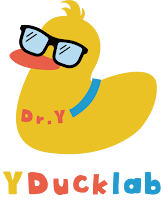1. User-Driven Innovation
"User-driven innovation" originates from the research of Eric von Hippel, a professor at MIT's Sloan School of Management and the founder of the user-driven innovation theory. His notable works include The Sources of Innovation (1988) and Democratizing Innovation (2005). Von Hippel has explored the impact of user innovation on businesses and the broader economy, introducing a groundbreaking paradigm in innovation studies.
- You can download his books here. (link)
 |
Source : https://evhippel.mit.edu/ |
He argued that key ideas and technical solutions for innovation often originate not within companies but from users who directly interact with the product or service. This stands apart from traditional innovation theories by emphasizing that users, as "Lead Users," actively recognize needs and voluntarily attempt to innovate to address them.
"Lead Users" are those who encounter problems earlier than the average consumer and explore innovative solutions to address these issues. In doing so, they often generate creative ideas that companies may overlook or fail to imagine.
2. Examples of User-Driven Innovation
LEGO IDEAS Platform |
Source : https://ideas.lego.com/ |
Users propose their own LEGO model ideas, and ideas supported by the community are turned into actual products. This process not only enables the release of creative products through collaboration with users but also contributes to strengthening customer loyalty.
- Users upload their unique LEGO creations (up to 3,000 pieces).
(For users aged 13 and above) - If an idea receives support from 10,000 users, LEGO reviews it.
- If the idea passes the review, it becomes a LEGO product (royalties are paid).
GoPro collaborated with extreme sports enthusiasts during its early product development stages. Users suggested improvements to camera performance, which led to the design of better products and accessories.
 |
Source : https://gopro.com/en/us/ |
The online t-shirt sales platform Threadless allows users to submit their own designs, and the community votes to select the designs for sale. This innovative model maximizes customer engagement while offering unique designs.
 |
source : https://www.threadless.com/ |
In 2014, Tesla made its patents related to electric vehicle technology available to the public, allowing users interested in innovation to participate. This initiative accelerated the development of the electric vehicle industry and promoted technological advancement.
 |
Source : https://worldwide.espacenet.com/searchResults?compact=false&PN=USA&ST=advanced&locale=en_EP&DB=EPODOC&PA=Tesla |
3. How to Implement User-Driven Innovation
To successfully apply user-driven innovation, the following strategies are essential:
Activate User Communities
Companies should provide platforms where users can exchange ideas and propose innovations. Forums, social media, and dedicated websites are necessary to create spaces for users and foster an active community environment.Identify Lead Users
Surveys, field studies, and data analysis can be used to discover lead users. Above all, these users often seek something they can actively engage with and explore.Adopt an Open Innovation Model
Companies should integrate internal R&D with user feedback through an open innovation approach.Prototype and Feedback Loop
Provide early prototypes to users and collect feedback to refine and improve the product.Offer Rewards and Recognition
Motivate users by providing monetary rewards, product discounts, or official recognition for their contributions. It is crucial to avoid exploiting users and instead approach them with an open and collaborative mindset.
User-driven innovation has the following limitations:
Limited Scope of Lead Users
Lead users often have characteristics that differ from general consumers, meaning their opinions may not align with broader market demands.Intellectual Property Issues
When users' ideas are commercialized by companies, conflicts over idea ownership may arise. While providing resources and compensating for ideas, clear distinctions must be made regarding commercialization rights.Complexity of Innovation Management
Managing and implementing ideas collected from a large number of users requires significant organizational capability and systematic approaches.
5. Scalability and Future Prospects
User-driven innovation is increasingly integrating with technologies such as AI, big data, and IoT, making it more efficient and advanced. For instance, big data analytics can identify lead users automatically by analyzing user behavior patterns, while AI can be utilized to analyze and refine user ideas.
Companies can expand the scope of collaboration with users beyond product development to areas such as service improvement and solving social issues.
User-driven innovation is already spreading across platforms like Kaggle, GitHub, and Wikipedia. Businesses should actively adopt these models to stay competitive.










0 댓글